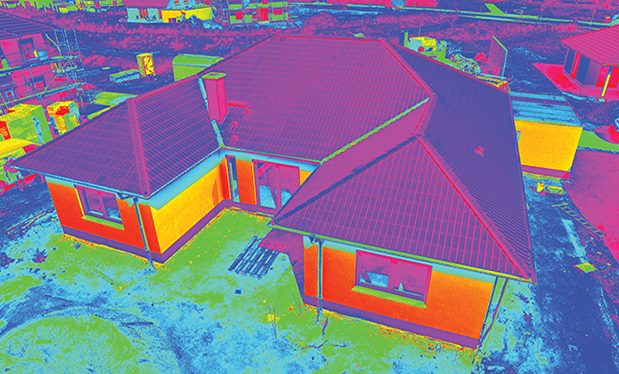As you know, there are many safety and health issues associated with managing a roofing company. And because you must focus on fall protection, material handling and hazard communication, to name a few things, you might be overlooking an important issue: suicide prevention.
Suicide is a serious public health problem that affects individuals, families and communities, including workplaces. In 2018, the most recent year national data is available, 48,344 people in the U.S. died by suicide, making suicide the tenth leading cause of death in the U.S., according to the Centers for Disease Control and Prevention. And among individuals 16 to 64 years of age, the CDC says the suicide rate has increased 42% in less than two decades (12.9 per 100,000 in 2000 to 18.3 per 100,000 in 2018).
Suicide affects everyone, but some groups may be at higher risk than others. A CDC report about suicide rates by industry and occupation for the year 2016 highlighted the significantly higher suicide rates within the construction and extraction industries (49.4 per 100,000 population). The suicide rate among those in the roofing industry was even higher at 65.2 per 100,000 population.
These data points provide a clear rationale for the roofing and construction industries to address suicide prevention as a health and safety priority not only because of the opportunity for employers to reach people who can be helped by suicide prevention education, mental health services and support but also because of the effect education and mental health interventions can have on workplace culture.
To help your workforce remain mentally healthy, you should be aware of suicide risk factors and warning signs and develop comprehensive suicide prevention programming initiatives.
Risk factors
There is no single cause for suicide, but there are multiple, intersecting factors that come together at particular points in time to create suicide risk. In other words, though it is natural for people to look for a direct “reason” (such as a job loss or a relationship breakup) when someone takes his or her own life, suicide prevention research shows it never is that simple.
Risk factors are characteristics or conditions that increase the chance a person may take his or her life. For instance, just like someone who is at risk for heart disease because of high blood pressure or a family history of heart disease, some people are at higher risk for suicide than others. Suicide risk factors can be grouped into three categories: health factors, historical factors and environmental factors.
Health factors include:
- Mental health conditions
- Depression
- Substance abuse
- Bipolar disorder
- Schizophrenia
- Conduct disorder
- Anxiety disorder
- Serious health conditions, including chronic pain
- Traumatic brain injury
Individuals working in labor-heavy positions, such as construction, often experience chronic physical pain or an injury. Pain can interfere with job performance, job security, sleep and well-being. Physical injuries sometimes can lead to self-medication or overmedication of prescribed drugs. This type of substance abuse can increase the risk of suicide.
Historical factors include:
- Previous suicide attempts
- Family history of suicide
- Childhood abuse and/or neglect
- Past trauma
Environmental factors include:
- Access to lethal means, including firearms and drugs
- Prolonged stress, such as exposure to harassment, bullying, relationship problems or unemployment
- Stressful life events such as rejection, divorce, financial crises, and other major life transitions or loss
Cyclical work with regular periods of layoffs and rehiring often is part of working in construction and can cause uncertainty about employment and job security. Not only can this type of financial instability lead to stress and/or anxiety, it also can cause many workers to lose access to insurance and other employment benefits.
Environmental factors alone are not thought to lead to suicide; however, if an individual has other health or historical risk factors, environmental stressors can contribute to an escalation in risk. Because environmental factors are critical in this mix, workplaces and job settings hold great potential for reducing risk and preventing suicide deaths.
Warning signs
Although suicide risk factors often endure over a long period of time, suicide warning signs can signal more imminent suicidal risk. Suicide warning signs can be grouped into three categories: talk, behavior and mood.
A person is showing signs of suicide if he or she talks about:
- Killing himself or herself
- Feeling hopeless
- Having no reason to live
- Being a burden to others
- Feeling trapped
- Being in unbearable pain
Individuals who are thinking about suicide often talk about ending their lives directly or indirectly. A person may make his or her intentions known and clear by saying he or she has no reason to live or would be better off dead, while other people may be less direct and say they feel trapped or are in unbearable pain. Some individuals may only hint at their feelings of despair, and these types of comments may be subtle and often can go unnoticed. It is important to take what a person says seriously, especially if he or she is displaying other suicide warning signs.
Behaviors that may signal risk, especially if related to a painful event, loss or change include:
- Increased use of alcohol or drugs
- Looking for a way to end one’s life, such as searching online for methods
- Withdrawing from activities
- Isolating from family and friends
- Sleeping too much or too little
- Visiting or calling people to say goodbye
- Giving away prized possessions
- Aggression
- Fatigue
Additional warning signs related to a person’s behavior, especially if unusual for him or her, may involve absences from work, which can include being late for a workday or for important meetings and events, taking long lunch breaks or taking more breaks than usual, leaving work early and/or taking more sick days than usual. There also may be a noticeable shift in a person’s typical work performance, which can include missing deadlines, decline in quality of work, being easily distracted, and a decline in a person’s enthusiasm for his or her job. In some cases, this may directly affect relationships with co-workers.
People at risk for suicide can display—often quite subtly—any of the following moods:
- Depression
- Anxiety
- Loss of interest
- Irritability
- Humiliation/shame
- Agitation/anger
- Relief/sudden improvement
We all have ups and downs in our moods, so when it comes to warning signs for suicide, it’s important to look for changes that seem uncharacteristic or concerning.
For example, if a person has struggled with depression, changes can signal mental health symptoms are worsening and risk is increasing. Another example could be something sudden, such as unexplained happiness in someone who has been depressed, which can indicate the individual has decided on a plan and is relieved he or she will no longer be in pain. Although warning signs are not always obvious, understanding suicide warning signs can help you recognize when someone is at an increased risk.
Prevention initiatives
Critical to suicide prevention are employers that take a proactive approach to identifying and managing suicide risk among their workers combined with a workplace culture that is supportive of employees who may be at risk for suicide.
For example, a “tough guy” culture, meaning a workplace with a culture of bravery and stoicism, often can create an environment in which individuals are less likely to reach out for help or admit to any type of perceived “weakness” such as stress or anxiety. According to the World Health Organization, pervasive social stigma and lack of awareness of resources and their effectiveness are among some of the most common reasons that prevent employees from seeking care.
Furthermore, employees with mental health conditions often face work-related discrimination, such as limited independence, increased supervision, jeopardized job security or restrictions to career advancement. This often results in workers taking great lengths to ensure co-workers and managers do not find out about their conditions, which includes avoiding employee assistance programs and effective treatment options.
To help protect such employees, you should consider workplace suicide prevention strategies that take a comprehensive approach to health. These strategies may include changes to the work environment to encourage healthy behaviors in multiple domains of health, mental health services and resources.
Mental health resources
Employee assistance programs are designed to offer confidential short-term counseling and information to employees regarding work and personal concerns that may affect workplace performance. Employee assistance programs also offer resources and information, typically including child and elder care services, support groups, stress reduction classes, alcohol and substance misuse treatment, marital counseling and legal/financial assistance. In addition to employee assistance programs, support for employees who seek treatment and/or who require hospitalization as a result of mental illness is vital to comprehensive suicide prevention efforts.
Regular communication to all employees about available mental health resources and services and the importance of mental wellness help promote a climate of acceptance that reduces stigma and discrimination in the workplace.
Education and training
Educational presentations and training programs about suicide prevention are designed to give individuals the knowledge and skills to understand suicide, whom it affects, and how to identify and support people who may be at risk. The goals of suicide prevention education are to teach people how to recognize the risk factors and warning signs for suicide along with recommendations for the role we can all play in suicide prevention.
Providing suicide prevention education to employees helps build a workforce where workers are more knowledgeable about mental health and suicide and better prepared to support their colleagues.
Crisis management
The suicide death of an employee is only one type of suicide that could affect your workplace. The suicide death of a client, vendor or a family member of an employee also can have a profound effect on the workplace. To ensure your workplace is in a position to quickly respond to a suicide, consider establishing policies and protocols before a crisis occurs.
You may want to consider lethal means education and/or restriction policies to reduce suicide risk. Lethal means restriction can involve removing or prohibiting access to firearms, drugs, chemicals and pesticides and making suicide prevention part of workplace safety. In addition, regularly communicate to employees available crisis resources and services and have crisis hotlines and chat resources available to employees as these free, anonymous services can support the person in distress and his or her supervisor.
Screening programs
Because mental health conditions like anxiety, depression and substance abuse often go unnoticed and untreated, screening programs can serve as a systematic way to improve identification of at-risk employees. Mental health professionals recommend screening programs have certain features to ensure optimal and intended outcomes. These features include voluntary participation, maintaining privacy or anonymity of participants, and the ability to provide supportive dialogue and referrals to mental health treatment when appropriate. Screening programs often serve as a comfortable, nonthreatening way to gauge one’s emotional health and should be used as a starting point for engagement into mental health services.
Make it a priority
In construction, safety is not just a priority, it’s a value. Critical to every company’s mission is maintaining a safe, healthy environment for its workers. Historically, these efforts may have focused largely on employees’ physical safety and well-being, but just like we all have physical health, we all have mental health. It’s time to make suicide prevention part of the construction industry’s health and safety values by creating workplace cultures of support; providing suicide prevention education and training to identify and support those at risk; and using screening programs to connect individuals with the help and support they need.
By including suicide prevention as part of the health and safety of your workforce, you can save lives and bring hope to those affected by suicide.
Resources
There are many occupational fields engaging in new strategies to prevent suicide, and all workplaces can benefit from a comprehensive approach to suicide prevention. Following is a list of resources to consider:
- Mental Health First Aid:
www.mentalfirstaid.org - LivingWorks:
www.livingworks.net - American Foundation for Suicide Prevention:
www.afsp.org - National Action Alliance for Suicide Prevention:
www.theactionalliance.org - Workplace Suicide Prevention:
www.workplacesuicideprevention.com - Construction Industry Alliance for Suicide Prevention:
preventconstructionsuicide.com
To read an article related to this topic, see “Coming out of the dark.”



